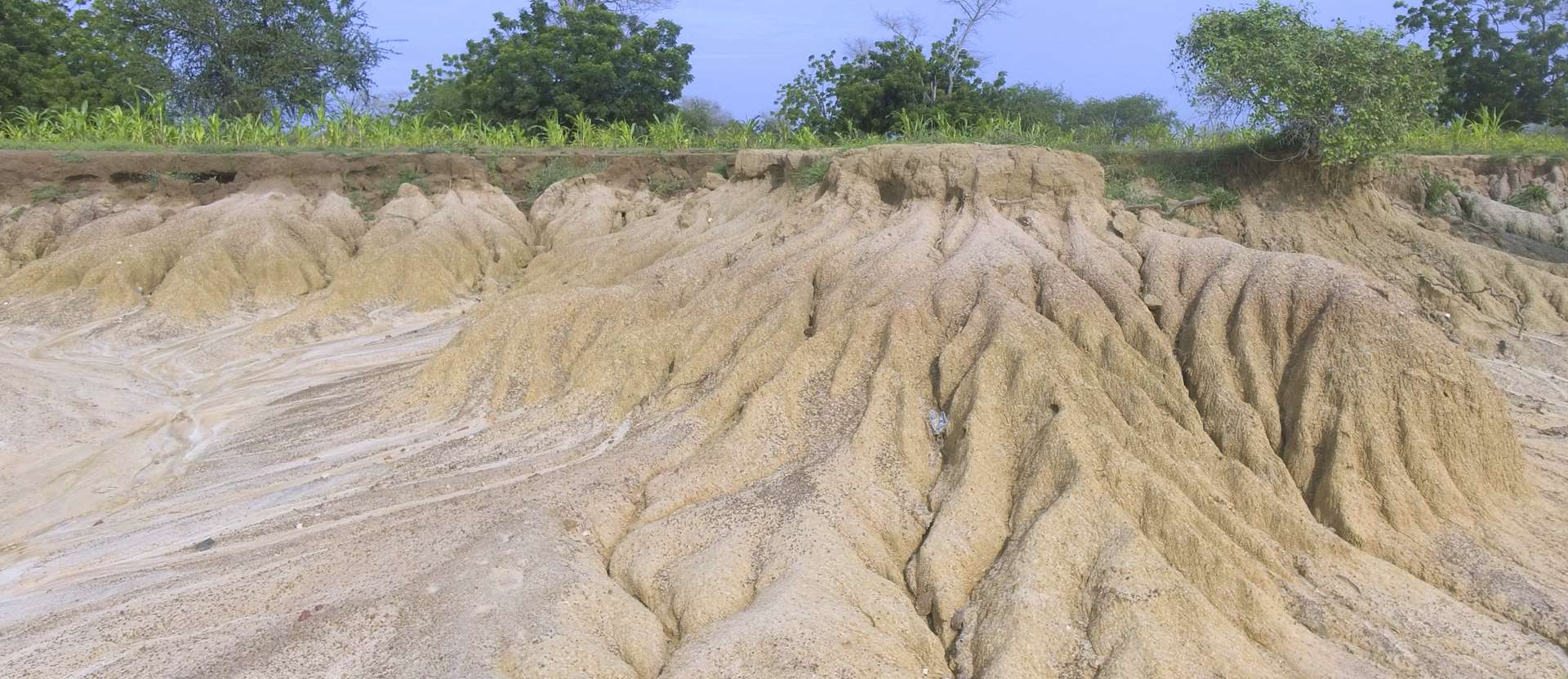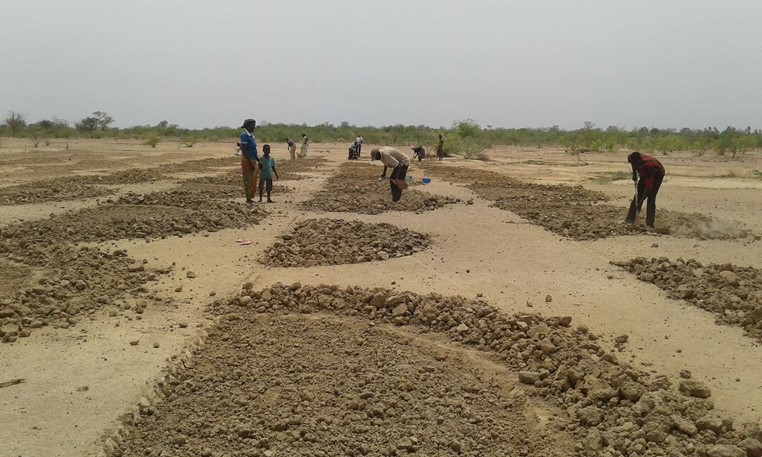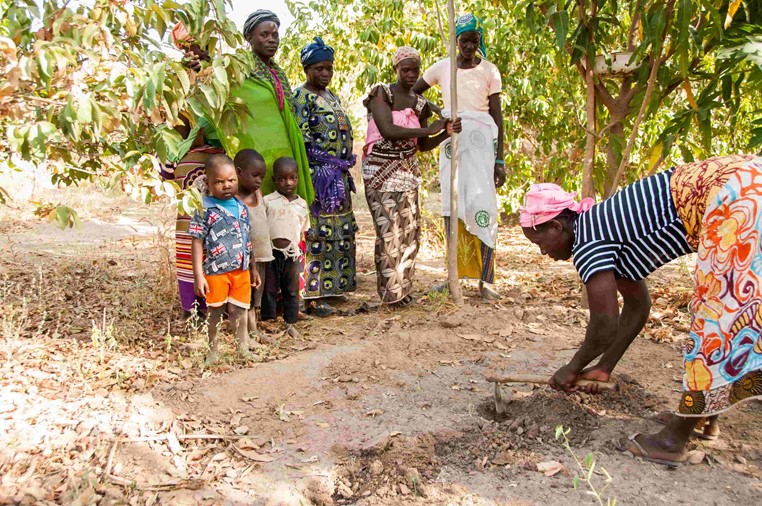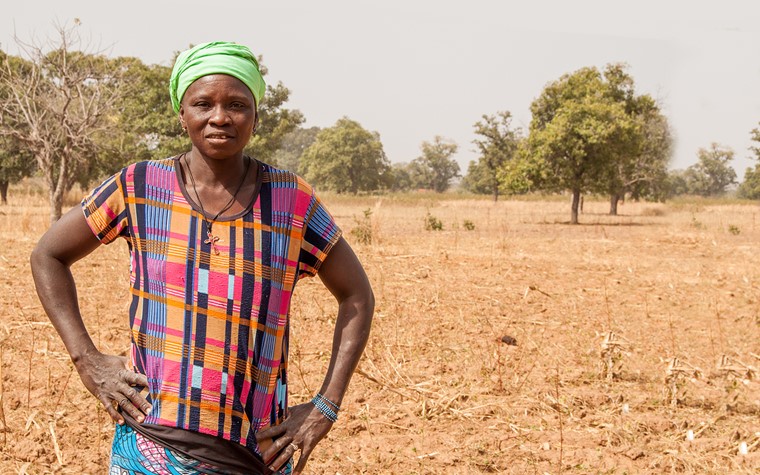
How trees are solving desertification and drought
Tree Aid is helping to re-green the planet and tackle the threat of desertification and drought in the drylands of Africa.
Desertification is the extreme degradation of dryland ecosystems. These drylands cover one third of the Earth’s land area, and are home to the large majority of Africa’s rural communities whose livelihoods rely on their land being productive and fertile.
Land here is extremely vulnerable to over-exploitation and inappropriate land use, such as overgrazing, excessive tree-felling and poor agronomic practices. This degradation further exacerbates the effects of the climate crisis, such as droughts. As a result, rural populations are often vulnerable to food shortages and hundreds of thousands of people regularly suffer the negative effects.
Great green growth
Tree Aid works closely with the rural communities in West Africa and Ethiopia who are facing a daily struggle trying to make ends meet under the threat of desertification and drought. We believe that protecting and restoring forests is essential to slowing down the effects of climate change and securing a live-able landscape for the millions of people who depend on forests. Trees mean clean air, water, shade and life for many across the African continent.

As well as planting trees, Tree Aid projects also help communities to learn soil and water conservation techniques which can reduce the vulnerability of their land to drought and climatic stresses. One of these technique is to dig pits in the dry season and fill them with compost. These zai pits are used to conserve water and nutrients and supply it to crops and trees, allowing them to establish better before the rains finish.
The UN Decade on Ecosystem Restoration
In March 2019, the United Nations declared 2021-2030 the Decade on Ecosystem Restoration. The aim of this declaration is to inspire the scale up of ecosystem restoration and reforestation, and aid the progress of existing projects such as the Great Green Wall initiative and African Forest Landscape Restoration Initiative under the Bonn Challenge.
Tree Aid’s vision is exactly this. To reforest and enrich dryland forests in order to promote a healthier, more biodiverse and productive landscape so that both people and planet can thrive together. We continue to support this important work by coordinating stakeholders, gathering support and sharing ideas and best practice to make these plans a reality.

Strengthening community roots
Whilst these international initiatives are key to mobilising large-scale work to reduce desertification, at the heart of Tree Aid’s work is community-led development leading to improved livelihoods. Desertification and increased droughts from unsustainable land-use are huge issues facing the communities Tree Aid works with, making life on land extremely difficult.
Sabine from Kona village, Mali, has experienced this reality first hand. She said: “When I was young, the landscape here was covered with all sorts of plant species. Then came exploitation of natural resources. There were bushfires, people excessively felled trees and produced charcoal from the forest whenever they wanted.”
Sabine joined Tree Aid’s Strengthening Forest Management project in partnership with Sahel Eco and the Darwin Initiative, to receive tools and training in land management to help restore the local land and respond to her changing climate.

Sabine said: “Tree Aid helped us to protect plant biodiversity and gave us training on the different techniques for reforestation of completely depleted areas. These included anti-erosive practices and assisted natural regeneration to protect and grow young tree seedlings.”
“We fought so that this land was usable. Thanks to the project, we have had lots of training on techniques to salvage the land. Today, our four hectares produce enough to satisfy us entirely.”
A brighter, greener future
Restoration of forests in Africa’s drylands bring communities increased access to essential natural resources that bring with them greater opportunities for increased income, food security and a brighter, greener future. Efforts at both a local and global scale are pivotal in tackling the desertification and droughts that threaten Sabine’s community and many more across Africa’s drylands.



